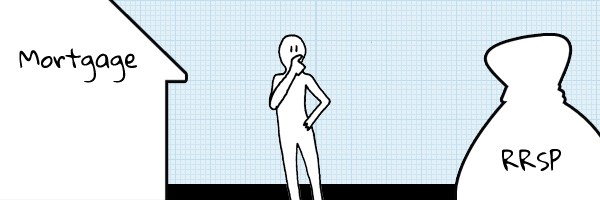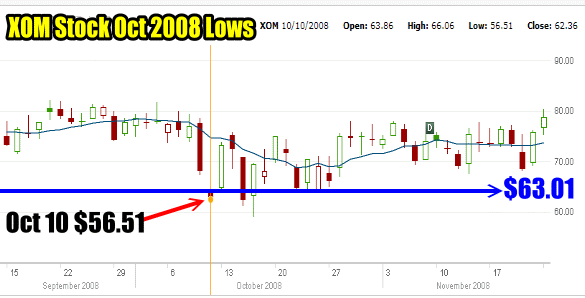RRSP vs Mortgage
Post on: 13 Июнь, 2015 No Comment

Lump-Sum Savings Available:
Make An Extra Mortgage Payment
Mortgage Principal Outstanding: Mortgage Interest Rate: Mortgage Amortization Period: Years Compounding Period
Total Potential Savings:
Conclusion
The numbers demonstrate, on an after-tax basis, you are better off paying down your mortgage. The calculations show that your Mortgage Savings Accumulated Value (after-tax) will be greater than your Accumulated RRSP Value (after-tax) when you use your Annual Lump-Sum Savings to pay down your mortgage before contributing to your RRSP. This will save you in interest payments and your mortgage will be paid off in years not years like you thought. Added Bonus: By using your savings to pay down your mortgage think of all those RRSP investment management costs you will be saving ?
The numbers demonstrate, on an after-tax basis, you are better off using your savings as an RRSP contribution. The calculations show that your Accumulated RRSP Value (after-tax) will be greater than your Mortgage Savings Accumulated Value (after-tax) when you contribute your Annual Lump-Sum Savings to your RRSP rather than paying down your mortgage.
The numbers show that both saving options are equally beneficial. Maybe do both?
Introduction
The average Canadian has always had limited savings and every year they wrestle with the same nagging question:Should I contribute to my RRSP or pay down the mortgage? Use this comparison calculator to determine the answer that best suits your financial circumstances. ( See recent IFM articles — What to do contribute to your RRSP or pay down your mortgage? )
Note: Any results or calculations displayed on this site are made available for information purposes only, and do not constitute financial or legal advice. By using the calculators, you agree to the InvestingForMe website Terms of Use and Privacy Policy .
Definitions:
Lump-Sum Savings Available
This is the amount of savings you have accumulated by the end of each year and are unsure how best to use it. The calculator assumes the lump-sum savings are deposited annually at the end of each 12-month period. For your mortgage calculations, it assumes you will not make a lump-sum payment during a partial year. For example, if your mortgage will be paid off in 10.67 years the calculator assumes you will make 10 lump-sum payments.
Mortgage Headings
Mortgage Principal Outstanding
This is the dollar amount of your outstanding mortgage. How much do you still owe your bank or financial lender?
Mortgage Interest Rate
This is the annual interest rate your lender charges you for your mortgage. If you are projecting forward keep in mind current mortgage rates are at historical lows and projecting today’s current rates forward 5, 10 or 25 years may not be appropriate.
Mortgage Amortization Period
This is the length of time, in years, until your mortgage will be paid off in full. The calculator does not adjust for partial years and it will round down the number entered. For example, 24.75 years will be read as 24 years by the calculator.
Compound Period
For Canadian mortgages the compounding period will be Semi-Annual.
Payment Frequency
How often do you make your mortgage payments? Simply select the option that best describes your current payment frequency.
Extra Principal Payments
This represents the total of the annual lump-sum, after-tax payments made during the years your mortgage was still outstanding.
Interest Savings
This represents the total interest expense you can save if you make your annual, lump-sum payments on your mortgage and thereby paying it off sooner.
Mortgage Paid Off In
By making additional lump-sum payments on your mortgage you will pay it off sooner than the mortgage amortization schedule requires.
RRSP Headings
Do You Spend Your RRSP Tax Refund?
If you are like most Canadians your answer will be Yes, I spend it! If you answer No, I reinvest it! the calculator assumes that you have faithfully contributed your RRSP Tax Refund to your RRSP, thereby further increasing your RRSP’s projected future values — both the before-tax and after-tax values.
RRSP Net Annual Rate of Return
How much do your RRSP investments earn, after investment costs, each and every year? The calculator assumes the rate of return entered will be the average annual rate of return each year for the period your mortgage is still outstanding.
Estimated Annual Investment Costs
This is the cost, expressed as a percentage, you incur when you invest your RRSP savings. Investing is not free, so if you do not know your number, you can use rates quoted in financial articles as a rough guide. If you want an accurate cost figure speak with your advisor or financial institution.
Your Income Tax Rate
This is your current income rate. If you are unsure about your income tax rate you can ask the professional that prepares your income tax returns or you can make an estimate using an income tax calculator, such as InvestingForMes Income Tax Estimator .

Projected Retirement Income Tax Rate
This is the rate of income tax you expect to be paying once you reach your retirement years. This is a difficult number to estimate and its accuracy will decline the further you are from retirement. Once again, you might find our Income Tax Estimator helpful, if you are comfortable in assuming future income tax rates will be similar to todays rates.
Number of Years
This figure equals the number of years your mortgage is outstanding for comparison purposes.
Compounding Period
For simplicity, the calculator assumes that your RRSP investment rate of return compounds annually, at the end of each year.
Accumulated RRSP Value
This is the calculated value of your RRSP at the end of the Compounding Period. It assumes the savings are still sheltered within an RRSP and no income tax has been paid on the accumulated amount.
After-Tax RRSP Value
This is the estimated value of your savings after it has been withdrawn from your RRSP and the income tax has been paid. The calculator assumes the RRSP savings, upon its withdrawal, will be taxed at a rate equal to your Projected Retirement Income Tax Rate. Note: When comparing your Mortgage Savings: Accumulated Value with that of your RRSP, we believe using the After-Tax RRSP Value is the better number best to compare Apples-To-Apples. After-Tax-To-After-Tax for a true picture.
Estimated RRSP Investment Costs
This is an estimate of the total dollars you will pay your investment advisors and financial institution to manage your RRSP investments during the Number of Years you contribute. This dollar figure only represents the accumulated fees and does not include the lost potential investment returns that would also result from investment costs.
Conclusion
The numbers demonstrate, on an after-tax basis, you are better off paying down your mortgage
This conclusion is reached when the calculator determines that the Accumulated Value (After-Tax): calculated for the Mortgage payments is greater than the After-Tax RRSP Value: calculated. The total savings (interest expenses and investment costs) you would achieve if you chose to use your annual lump-sum savings to pay off your mortgage is also summarized. This dollar amount represents the actual, out-of-pocket savings. Or.
Best to use your lump-sum savings as your RRSP Contribution
This conclusion will appear when the calculator determines that your Lump-Sum Savings Available is best used as an RRSP contribution. For example, the After-Tax RRSP Value: is greater than the Accumulated Value (After-Tax): calculated for the Mortgage payments. (Also keep in mind the After-tax RRSP Value: is not adjusted to reflect the higher mortgage interest costs you will incur by not pre-paying your mortgage.)
Securities or investment strategies mentioned in the InvestingForMe website may not be suitable for all investors or investment portfolios. The information contained in this website is not intended as a recommendation directed to a particular investor or class of investors and is not intended as a recommendation in view of the particular circumstances of a specific investor, class of investors or a specific portfolio. You should not take any action with respect to any securities or investment strategy mentioned in this website without first consulting your own investment criteria and financial circumstances in order to ascertain whether the securities or investment strategy mentioned are suitable in your particular circumstances. This information is not a substitute for obtaining professional advice. The commentary, opinions and conclusions, if any, included in this website represent the personal and subjective views of the writer who is not employed as an analyst and do not purport to represent the views of Investing For Me Education Inc. The information contained herein has been obtained from sources believed to be reliable at the time obtained but neither Investing For Me Education Inc. nor its employees, agents, or information suppliers can guarantee its accuracy or completeness. The information on this website is not and under no circumstances is to be construed as an offer to sell or the solicitation of an offer to buy any securities. The information contained in InvestingForMes website is furnished on the basis and understanding that neither Investing For Me Education Inc. nor its employees, agents, or information suppliers is to be under any responsibility or liability whatsoever in respect thereof. InvestingForMe.com is a website owned and operated by Investing For Me Education Inc. for educational purposes only. Used under license.
+ Performance of the Sample Portfolios (Balanced and Income) does not take into consideration management fees, transactions costs or other account expenses that investors might incur. Past performance may not be repeated.














